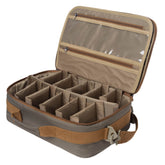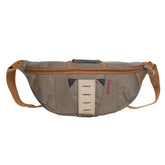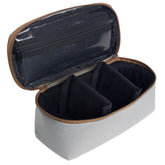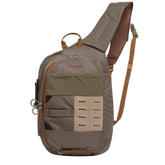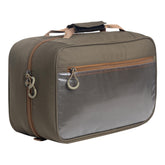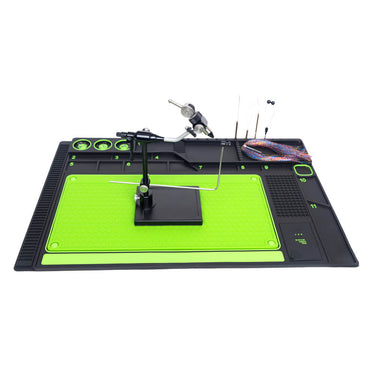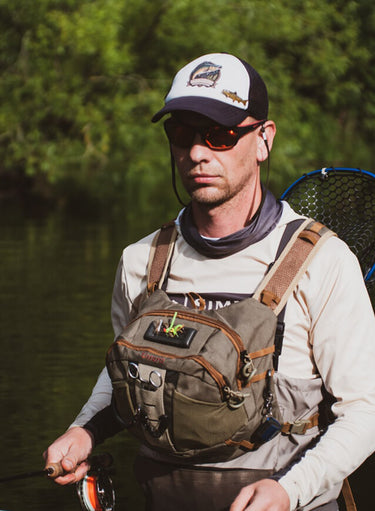Fly Line: Essential Backing for Big Game Fish and Distance Casting
When it comes to fly fishing, the choice of line can significantly impact your success on the water. Selecting the right fly line, whether for big game fish or distance casting, plays a crucial role in delivering your flies effectively and ensuring that your technique is rewarded. With various types of backing line available, I find it essential to understand how each type can enhance my fly fishing experience.

For targeting larger species, using a robust backing line not only provides extra line capacity but also offers the necessary strength to handle powerful runs. In my adventures, I’ve noticed how a well-selected fly line can improve my accuracy while casting, especially when using streamers. Understanding the nuances of my setup—including my fly rod, reel, leader, and tippet—has always been key to optimizing my performance in different fishing situations.
As I explore the waters, the choice of backing line becomes a critical consideration, whether I'm casting long distances or focusing on aggressive fish. Choosing the appropriate fly line can certainly elevate your fishing game and lead to more productive days on the water.
Fly Line Basics
Understanding the fundamentals of fly line is crucial for effective fly fishing. The type of fly line, its weight, taper design, and components directly impact casting performance and presentation on the water.
Fly Line Types and Uses
There are several types of fly lines, each tailored for specific fishing conditions. The primary categories include:
- Weight Forward (WF): Designed for ease of casting, particularly for beginners. The concentrated weight at the front facilitates longer distances.
- Double Taper (DT): Ideal for delicate presentations. The line tapers at both ends, allowing for versatility in casting techniques.
- Shooting Taper (ST): Recommended for distance casting, especially in windy conditions. It’s typically a longer, faster taper for streamlined performance.
Choosing the right line type significantly affects how effectively I can cast and catch fish, depending on the fishing environment.
Understanding Line Weight and Taper Designs
Line weight is crucial for matching my rod and reel to the conditions I face. Fly lines are rated in grains, with common weights ranging from 1 to 12. A heavier line allows for easier casting in windy situations.
Taper designs also influence casting characteristics. The front taper aids in smooth turnover, while the rear taper contributes to line control. Some designs include:
- Weight Forward Taper: Focused weight helps launch the line.
- Belly: This is the thickest part of the line, providing bulk for longer distances.
Knowing the appropriate line weight and taper makes a difference in how my flies land on the water.
Line Components and Material
Fly lines consist of several components, including the core and coating. The core provides strength and flexibility, while the coating affects durability and performance in different conditions.
Materials used vary widely, with PVC and polyurethane being common. Coatings can be designed for either floating or sinking lines, drastically altering how the line interacts with the water.
Additional aspects include:
- Stiffness: Affects the line’s ability to shoot through the air.
- Line Density: Determines the rate at which a line sinks.
Fully grasping these components ensures I can select the best fly line for my needs.
Fly Line Selection for Different Fishing Scenarios

Selecting the appropriate fly line is crucial for success in various fishing scenarios. Each type of fishing demands specific line characteristics to optimize performance and enhance the angler's experience.
Fly Fishing Backing Line for Big Game Fish
When targeting big game fish, I prioritize strength and durability. A backing line with a minimum of 20-30 lb test is essential. This ensures it can handle the powerful runs of species like tarpon or marlin.
For saltwater applications, a braided backing made of high-quality materials provides minimal stretch and increased sensitivity. I often choose a bright color for visibility against the water. A typical backing length of 200-300 yards allows for ample line to spool on the reel, which is critical when battling larger fish.
Fly Fishing Backing Line for Distance Casting
Distance casting requires a fly line designed for long, accurate presentations. I opt for a weight forward taper, as it allows for smoother casts that propel the fly far from my position. A heavier grain weight at the front facilitates loading the rod quickly.
Floating lines are my go-to for this scenario, as they help achieve greater distance. Incorporating a slick coating enhances casting distance while reducing wind resistance. It's important to use a backing line rated for at least double the rod's weight rating to ensure it can withstand the stress during longer casts.
Fly Fishing Backing Line for Streamer Fishing
When fishing streamers, I focus on a fly line that offers quick loading and versatile sink rates. A floating line paired with a sinking leader or a full-sinking line works well for presenting streamers at various depths.
I prefer a heavier fly line to provide smooth turnover, which helps in presenting bulky patterns effectively. A level line (as opposed to tapered) may also be an option, allowing me to maintain control and retrieve speed. By using the correct backing line, I can ensure that I have enough capacity for aggressive strikes and strong runs.
Advanced Fly Line Considerations and Maintenance

Maintaining and optimizing fly line performance is crucial for effective fly fishing. Proper care can significantly enhance the lifespan and functionality of the line, allowing for better casting and presentation.
Optimizing Fly Line Performance
I focus on the fly line's tip and taper when optimizing its performance. The front taper is essential for delicate presentations, while the rear taper allows for smooth energy transfer during casting. If I notice reduced performance, I check the coating for any signs of wear or damage.
Using a high-quality fly reel can support the line's performance. I ensure the reel is properly matched to my line weight and type. Additionally, choosing the right backing line is essential, especially when targeting big game fish, as it provides the necessary capacity and strength.
Fly Line Care and Longevity
To extend the life of my fly line, I prioritize regular cleaning. I use a gentle soap solution to remove dirt and residue. After rinsing, I lay the line flat to dry completely before storage. This prevents mildew and maintains flexibility.
I also pay attention to how I store my fly line. I keep it on a reel in a cool, dry place, avoiding direct sunlight. I check periodically for any tangles or nicks. Proper maintenance not only enhances performance but also ensures I can enjoy fishing sessions without interruptions due to line failure.



